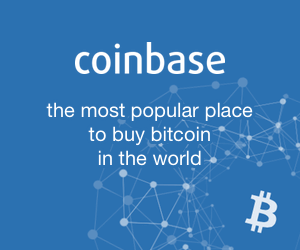Since the start of 2019, the crypto market has been on the receiving end of an insane amount of financial volatility.
For example, in January, the total market capitalization of this burgeoning sector was around $130 billion. However, by July, the market at large had witnessed an influx of bullish momentum that pushed the total capitalization value of this space to a whopping $373 billion. Following this period, the aforementioned bull run proceeded to subside quite a bit, with the market now hovering a tad under the $200 billion threshold.
A few cryptocurrencies maintained a strong financial standing all year long and were able to stave off the various economic slumps that were observed throughout 2019. Here are the standout cryptos not named Bitcoin.
ChainLink
While a fair few people may be surprised to see ChainLink (LINK) in the list of the best-performing cryptocurrencies of 2019. The platform essentially seeks to bridge the gap that exists between blockchain-based smart contracts and real-world applications.
From an economic standpoint, LINK started the year relatively slow — with the price of a single token rising from $0.31 to just over $0.45 over a five-month period. However, by the first week of July, the currency reached its financial apex, with a single LINK token being traded for as high as $3.74. And while the currency has lost a bit of its insane financial momentum over the last couple of months, LINK is still trading slightly above the $1.90 mark.
All in all, the LINK/USD trading pair has surged by over 500% since the start of the year, and the LINK/BTC pair has also gained more than 300% over the same time period — which is quite an impressive feat, to say the least.
Binance Coin
Released onto the market back in mid-2017, Binance Coin (BNB) is a token that can be used for trading purposes as well as for the facilitation of various fee-related payments within the Binance exchange platform. Not only that, but Binance also provides BNB holders with various incentives and discounts for making use of the digital currency for internal transactions.
In regard to BNB’s performance, the currency started the year at a price point of around $6. However, by the final week of May, the price of a single BNB token rose to $35.20 — thereby signaling a growth of more than 450%. During the third quarter of 2019, BNB’s value slid from $33.10 to $15.79, thus showcasing a drastic reversal in the currency’s fortunes. However, over the last couple of months, BNB’s value has remained relatively stable, with the asset’s average value in December currently floating just below the $14 mark.
Since the start of the year, the overall value of the BNB/USD pair has increased by over 140%.
Tezos
Tezos (XTZ) is a decentralized computing platform that makes use of a formal verification protocol as well as a proof-of-stake consensus module for its internal governance-related matters. In regard to how the system works, XTZ holders who stake their tokens are eligible to receive additional tokens as an incentive for creating and verifying blocks.
From a financial performance standpoint, XTZ started off the year at a price point of $0.47. However, by the end of the first quarter of 2019, the value of a single token had scaled up to an impressive $1.06. XTZ’s performance continued to surge between April and June, with the currency touching its annual high of $1.88 on May 19. During this year’s third quarter, XTZ’s value continued to hover around the $1–$1.20 region. However, since the start of December, the crypto asset has once again picked up momentum, with a single token currently trading for $1.51.
Over the course of 2019, the value of the XTZ/USD trading pair has increased by over 190%.
Synthetix Network Token
The Synthetix Network Token (SNX) is an ERC-20 token that is meant to facilitate all of the native transactions associated with the Synthetix exchange. Additionally, SNX tokens are traded using a peer-to-contract model and are also used as collateral to back SNX synthetic assets, called Synths, that are employed within the Synthetix Network to track the market value of any basic asset.
Between January and April, the price of a single SNX token touched a maximum of $0.07. However, since May, the digital currency has continued to soar in value — with the only major slip coming on Nov. 26, a time when the crypto market at large experienced a major financial pullback.
Overall, since the start of 2019, SNX’s value has increased by over 200%, with the currency currently trading for $1.33.
Bitcoin Cash
Currently one of the market’s top 10 cryptocurrencies, Bitcoin Cash (BCH) is basically a hard fork of Bitcoin.
From a financial perspective, one BCH was trading for $135 during the second week of January. However, by the beginning of April, the currency had soared to over the $300 threshold. The currency reached its annual monetary apex on June 26, when the asset was trading for $479.96. During the third quarter of 2019, BCH’s value remained relatively stable — hovering around the $300 mark — but since the start of November, the currency has been continually slipping in value, with a single coin currently trading just over $195.
All in all, over the course of the last 12 months, the value of the BCH/USD trading pair has risen by over 30%.
Cosmos
Cosmos (ATOM) is a decentralized network comprising of various blockchains that are independent, scalable and interoperable. The platform has gained a lot of attention over the course of 2019, especially since cryptocurrency associated with the network, ATOM, surged dramatically during the month of May. To put things into perspective, it bears mentioning that on Jan. 1, ATOM was trading for a price of $0.001.
As things stand, the currency is selling well over $4.20.
Litecoin
Litecoin (LTC) is a top 10 cryptocurrency that was created by Charlie Lee to serve as a more resource-friendly version of Bitcoin.
LTC was trading for $32 during the first week of January. But by June 22, the altcoin had risen to an impressive price point of $141.73. Since then, LTC’s performance has continued to decline, with the currency trading for an average price of around $43 throughout December.
All in all, the value of the LTC/USD trading pair has increased by around 40% since the start of the year.
Basic Attention Token
Basic Attention Token (BAT) is a digital currency used in the Brave internet browser. Brave is a blockchain-based internet browser that incentivizes its users’ internet habits by rewarding them with BAT tokens for watching ads, spending a certain amount of time on a particular website, etc. From a technical standpoint, the browser’s native framework is quite similar to that of Chromium — a project that was created by Brendan Eich, the man behind JavaScript and the co-founder of the Mozilla project.
BAT started off the year trading at around $0.13. However, by the second half of April, the currency had already scaled up to its annual high of $0.44. Following this period, the top 50 asset continued to slide in value until September, after which it once again began a financial ascent, reaching a relative high of $0.27 on Nov 17. Since the start of December, BAT’s value has remained relatively stable around the $1.70 region.
Over the course of 2019, BAT’s value has increased by around 35%.
Ether
Ether (ETH) is a top 10 crypto asset that is widely recognized as being the second most popular digital asset (i.e., after Bitcoin) on the market today. Ethereum developers envisioned the platform as a “world computer” for smart contracts — a digital protocol that helps facilitate, verify and enforce a contract whose terms have been predetermined. Not only that, but the Ethereum ecosystem also allows for the issuance of ERC-20 tokens.
On Jan. 13, Ether was trading for $116. However, over the course of the following six months, the value of the second-biggest cryptocurrency continued to increase, finally scaling up to its annual high of $334.66 on June 26. Following this period of bullish momentum, Ether once again continued to slide before finally settling down around a price range of $150–$180, except for a brief period in September when the currency surged above the $210 mark.
Since late November, Ether has been trading steadily between $130 and $150, thereby showcasing an overall value increase of around 20% since the start of the year.
EOS
EOS is a cryptocurrency platform that can be used by developers to devise a number of novel decentralized applications. In this regard, the EOS token is used to facilitate the eponymous system’s native transactions as well as its internal processes. Additionally, the EOS blockchain has been designed to be highly scalable and leaves a lot of room for customization — which is one of the main reasons why the project is so popular in the first place.
In terms of EOS’s financial performance, the digital currency was trading for $2.23 during the second week of January. Between the months of February and May, the asset surged quite dramatically, with the value of a single token reaching a price point of $8.54 on May 31. Over roughly the next five months, the currency’s value continued to float between $3–$3.80. However, since the last week of November, EOS has remained quite stable, currently trading around the $2.55 mark.
Presently, the EOS/USD trading pair has gained around a 10% value since the start of the year.
This Article Originally Appeared In CoinTelegraph































